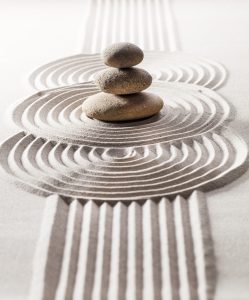The Meaning
Feng means “wind,” and shui means “water” (pronounced fung-shway). In Chinese culture, gentle wind and smooth water have always been associated with both a good harvest and good health. In contrast, harsh winds and stagnant water have been linked to famine and disease. Therefore, “good” Feng-Shui has come to mean good livelihood and fortune, and “bad” Feng-Shui has come to mean hardship and misfortune.

Feng-Shui is not a superstition or a set of dos and don’ts. It is the art and science of understanding the forces of nature in order to design houses and workplaces that blend with the environment instead of clashing with it. It aims to help you live in harmony with the world by promoting the flow of positive and unobstructed energy, neutralizing or avoiding negative or destructive energy flow. Energy flows just like the water in a river. Creating a proper environment for the flow of energy, let’s say in a room or office, can help to circulate the Qi promoting a feeling of balance and harmony.
What feels better? When you walk into a room full of clutter or when everything is clean and put away in its place. Just adding a few plants and hanging a picture with water, mountains and a green forest can completely change things.
Like Traditional Chinese Medicine, Feng-Shui has a rich and subtle tradition with a standardized body of knowledge that takes years of formal training to master. As the tradition becomes firmly planted in the west, training programs and professional standards will evolve as they have in the east.

The Two Branches of Feng Shui
Feng-Shui has two branches: the Landform Classification (ti-li) branch and the Building Characteristics (chai-yun) branch.

The Landform Classification branch studies how energy flows over, around, and through mountains, rivers, and valleys, and how the energy connected with nearby landforms, as well as roads and buildings, can affect a building or burial site. The Building Characteristics branch studies the flow of energy within a structure and how it affects the occupants. Expert practitioners are trained in both branches of Feng-Shui.
